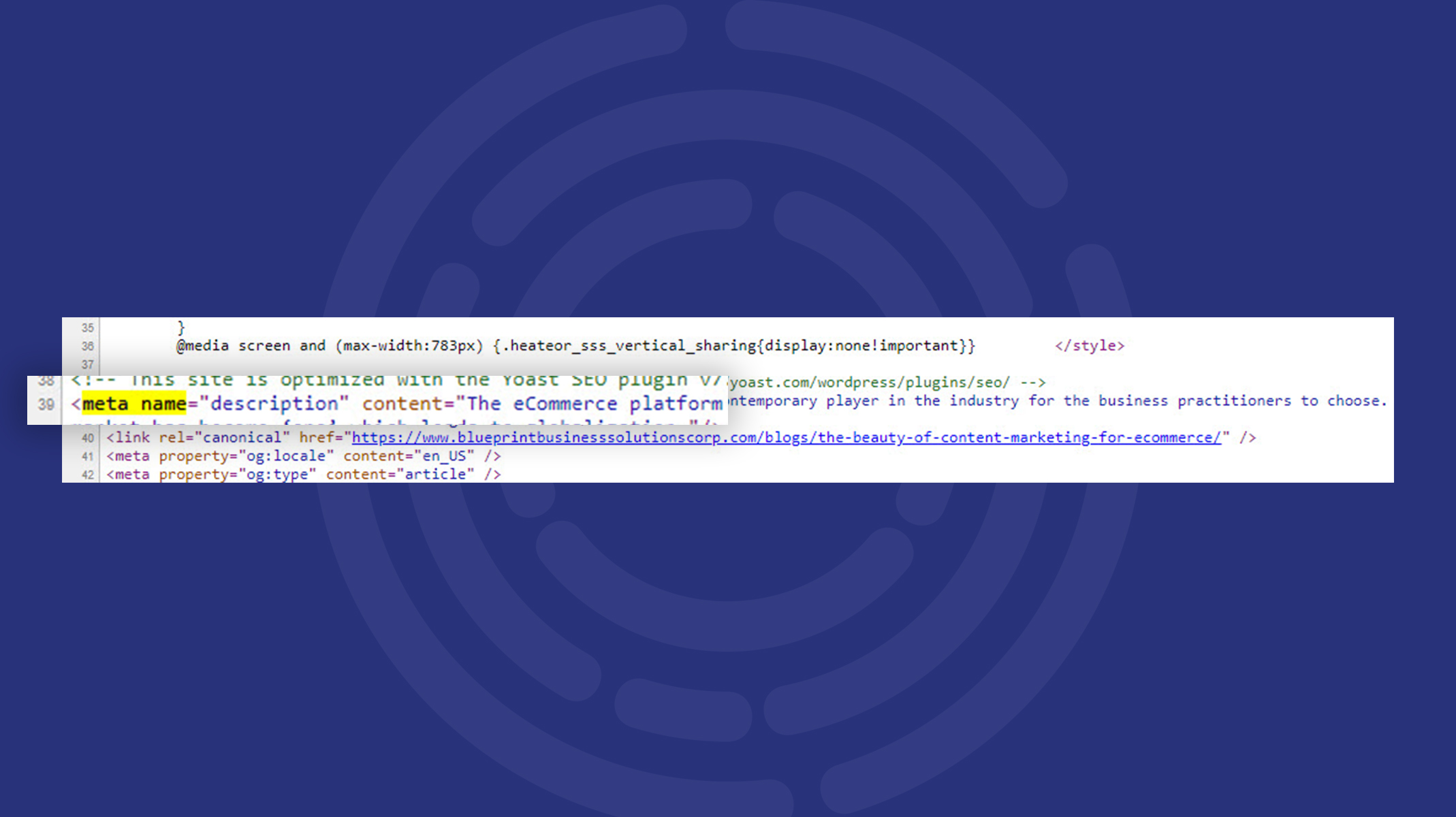The search engine optimization aspect of digital marketing can be ‘wheels within wheels’ if one is not proficient in the practice. Sometimes, people publish their blog articles hoping for mega results to surge the soonest and we all know it’s not going to happen — at least not anytime soon. The truth here is posting a well-written article with astonishing graphics is not enough. A stellar article and a nice photo are powerful elements to drive engagement results, but optimization must be done to bolster its reach to the right audience. In this essence, some corporate bloggers forget this essential foundation in digital marketing — which is the SEO phase.
It is true for an SEO work to be very overwhelming in a way that nibbling Oreo cookies at your station will give you a hard time. Herewith, getting deeper into the SEO phase must be a priority. Lots of factors contribute to the search engine results pages (SERP) for content’s visibility and this includes the meta description.
What is a Meta Description
Some marketers may not know about the existence of this little gem, but a meta description can literally attract a searcher to click on the link and come to your website. Other online marketers and bloggers typically overlook this whenever they run a webpage — probably because it doesn’t stand-out or felt necessary during the blog posting process. Today, this article will tell you about meta description and why it is essential for your content optimization.
Basically, a meta description is the content of the page in a nutshell. It is a tag in HTML providing the brief summary of what the web pages are all about. Search engines show them as a form of a sentence to a short paragraph in search results below the green URL. If a user searched for a word or phrase, search engine will provide results containing similar keywords and phrases in the description. With that, optimization for meta description is very imperative for the on-page SEO purposes. The meta description’s prime purpose is to persuade the user to click on the link directing your website.

Up until recently, the meta description characters have an allowable maximum of 160. Now, it’s up to 320 characters already. Just late last year, Google had announced regarding the increase of meta description characters, which bound to change the existing landscape of SEO. Technical gurus and online marketers alike expressed their surprise and delight pertaining to the changes.
According to the statement provided, the Google executives have agreed on a consensus to increase the meta description characters for the desire to provide descriptive and useful snippets. Furthermore, they expressed the need to educate searchers about how pages are relevant to their searches.
Creating an effective and awesome meta descriptions
Now you have the idea about the importance of meta descriptions, let’s kick-off what must be done to create a great meta description to boost your content in the search engine results.
1. Describe Content in a Nutshell

The previous standard of 160 characters can be dreary to some; especially to those who don’t have the inclination to sum-up a whole webpage into few characters. The great day had finally come to SEO gurus as Google have marked up meta description characters as mentioned before. Now, outline the entire webpage content and make sure to add on all the necessary details.
2. Add Call-to-Action

Your prime purpose is to entice web searchers to click on the link of your website provided by the search results. Meta description is the ideal HTML attribute for you to make the searchers click on the link. Grab their attention and provide subtle instruction which will lead them to click and discover the website.
3. Give them What they Want

Providing them what they want is relatively giving them the solution or benefit of what they are seeking about. Give the searchers the hint on what to expect the moment they click on your link. Maximize the description characters and preview your web page in a direct and honest manner. This is highly crucial especially if you’re aiming for healthy bounce rates for the website.
4. Don’t Create a Clickbait

For the ages that world wide web existed on the internet, the last thing you want to deal with the search engine is the fraud. No one wants to be deceived. Clickbaits are truly misdeeds which are against the internet scriptures. Add only relevant information on your meta description or else the searchers will hit the back button faster than the growth of a beanstalk. Ultimately, this will hurt your credibility and eventually get penalize by google if you do this.
5. Must Have the Focus Keyword/s

To fully optimize your content, integrate focus keyword/s to match meta description of the searcher’s keywords. With this, Google will more likely to use your meta description and feature it in the search results. In the long run, the webpage link will become suggested and related in the future searches.
Some may think about meta description as a piece of text has nothing to do with engagement and conversions, but the truth here is that these collective words can be your ace to win over prospects. It acts as your sales pitch for the website and for healthier bounce rates. In the end of the day, we all thrive for exposure in the gigantic universe of the search engine. We want our content to be read and persuade people to choose our services despite the cutthroat competition.

